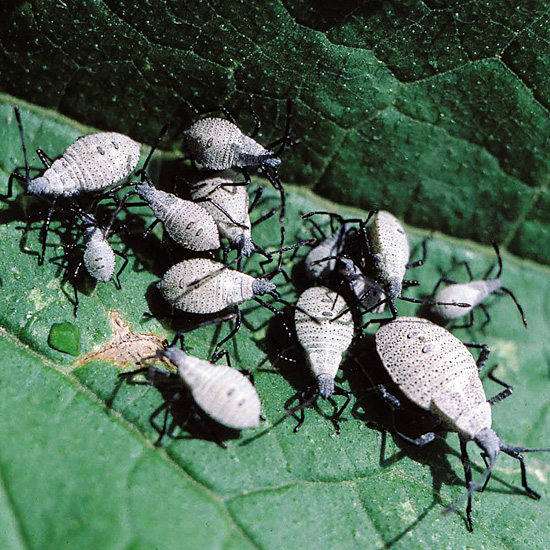






Watch out for squash bugs on vegetables in the squash family -- both summer and winter squash, pumpkins, cucumbers, melons, and gourds. The adult squash bugs are brownish-black in color and often overwinter in the soil. In late spring and early summer, they lay clusters of bronzy-red eggs. These eggs hatch into small black bugs that turn light gray as they grow.
Using needle-like mouths that suck nutrients right out of plant leaves, squash bugs cause the leaves to wilt and turn yellow. Like mosquitoes can transmit malaria, squash bugs can also spread several serious diseases to the vines.
continue reading belowRow covers: In spring, protect young plants with floating row covers. These row covers keep the squash bugs away from plants but still allow air, light, and moisture in. Be sure to remove the row covers when your seedlings grow too large or when the temperatures heat up in summer.
Pick them by hand: If squash bug populations are small, picking the insects off by hand and dropping them into a bucket of soapy water is an effective, natural treatment.
Attract beneficial insects: Plant flowers, such as marigolds, calendula, sunflower, daisy, alyssum, or dill nearby to attract beneficial insects. A few species, such as tachinid flies, attack squash bugs.
Clean up in fall: Because squash bugs overwinter in the garden, cleaning your garden up at the end of the season can help manage them. Remove garden debris and till the soil so there are fewer places for the squash bugs to spend the winter.
Insecticides: A number of insecticides also effectively kill squash bugs. Look for products containing carbaryl or permethrin. Be sure to follow the package directions carefully.
Copyright © www.100flowers.win Botanic Garden All Rights Reserved